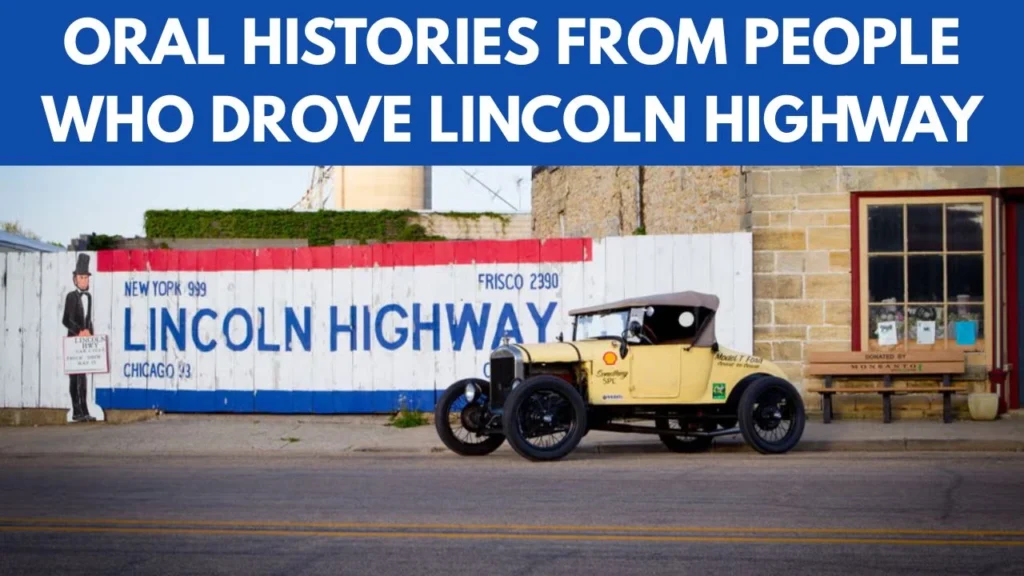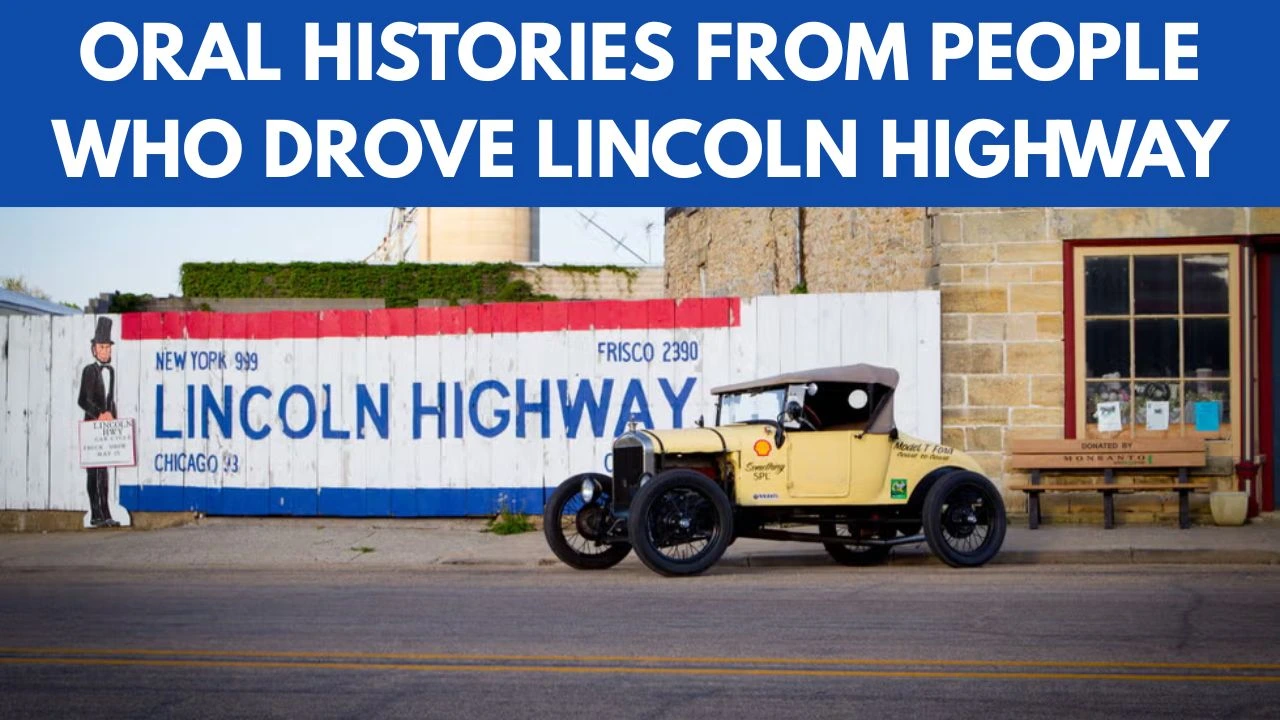The stories of the Lincoln Highway spring to life most clearly through the voices of people who travelled it in its early years. Oral histories: as a window to the past, these stories give us voices talking about mud, grit, adventure, and discovery. While written accounts have their utility, oral accounts are imbued with emotion; whether it is delight seeing miles and miles of open plains, frustration if they were stuck in the rain, or relief that after hours of rough bouncing, they finally found a small-town diner.
Preservation of these oral histories is necessary. They are more than stories– they are living experiences being shared from one generation to the next. These accounts help us to understand what travel was like in a time of no interstates, smartphones, and roadside motels. It is through these voices that we understand the human experience that drove people to conquer the challenge of a cross-country trip when the automobile was still just a novelty.

Oral Histories From People Who Drove Lincoln Highway Museum in the Early Days
Established in 1913, the Lincoln Highway became a destination for explorers in its early days. Some of these drivers were not filtering through merely for travel, they were creating a new sort of escapade. They were creating a sense of adventure. Driving across the country was almost an impossible dream before the highway was opened. These first drivers showed it could be done.
They left behind more than some dusty photographs. They left behind incredible markers of curiosity, perseverance, and courage. Many of these stories have been preserved through interviews, letters, and recollections from family. As the decades passed, many of these oral histories became essential in piecing together the human story connected to the Lincoln Highway. When we visit the museums today, the spirit of these drivers remains. They are the reason we made the effort to capture and preserve so much of the history of this highway.
Lincoln Highway Oral Stories
| Aim | Oral Histories From People Who Drove Lincoln Highway Museum in the Early Days |
| Oral Histories | Makes use of recorded interviews to obtain and investigate personal stories from the past. |
| Why is preserving oral history important? | They are not just stories; they are experiences passed down from generation to generation. |
| What do they make us understand? | These are the stories that give us a feel for what it meant to travel the road before there were interstates, no smartphones to look up hotel bookings. |
| Lincoln Highway Museum | Dedicated in 1913, America’s first coast-to-coast highway. |
| Category | News |
| Resources | https://lhhc.org/lincoln-highway-experience/mission-history.html |
The Driving Experience of the Lincoln Highway in Its Early Years
Unpaved Roads: A True Adventure
Driving the Lincoln Highway in its early years was not at all like today. Think of a road where there was no pavement — just dirt paths that had been worn down through the fields and prairies. When it rained, those paths turned to gooey mud and swallowed cars. Drivers had to take shovels, spare tires, ropes, and sometimes even whole pieces of lumber to be able to pull their vehicles out.
Oral histories tell stories of cars bouncing along uneven paths, kicking up gulfs and gulfs of dust — dust on the cars, dust on the windshields, dust on the clothing, and dust in the hair. Bridges were rare, so sometimes you were driving through shallow rivers and other times you had to wait for a local farmer to pull you across.
It was certainly not easy, which was part of the adventure. No rest stops, no filling stations every few miles; each day on the Lincoln Highway was a different adventure. Drivers needed to be mechanics, adventurers, and navigators just to go down the road. Listening to those stories, you can begin to appreciate the tenacity it took to even journey a few miles.
Voices From the Past – Memories of Early Drivers
Tales of First Cross-Country Trips
Many of the earliest oral histories are from families who made bold trips across the country. One remembers a family in 1915 that packed everything they owned on a Model T and drove from Ohio to California. They slept in tents, cooked meals over campfires, etc. Sometimes they went days without seeing another traveller.
Another oral history describes a group of college classmates who, upon graduating, decided to “see the Pacific.” While they did not know how to repair a car, they learned on the trip: changing tires in the heat, pushing their car out of ditches, and even making repairs with rope and wire. In their words, when they finally made it to San Francisco, it was like standing on the edge of the world.
These stories are not just about travel; they are about transformation. Everyone who drove the Lincoln Highway back in the day came home transformed, with an understanding of the scale and diversity of America.
Frequently Asked Questions On Oral Histories From People Who Drove Lincoln Highway Museum in the Early Days
- Where can I locate oral histories from Lincoln Highway travellers?
- Most Lincoln Highway museums and historical societies will have interviews and documents to listen to or read, many of which have been available online through oral histories, podcasts, and other digital exhibits.
- Are there guided tours that tell stories of early drivers?
- Yes, there are numerous heritage tours along with the Lincoln Highway that include narration/storytelling and featured locations based on early travellers’ stories. These tours provide a more authentic experience of the road’s history.
- How did early travellers find their way on the Lincoln Highway?
- Before road signs and GPS, drivers used written guidebooks, maps, and some paint on telephone poles. Oral histories have documented that getting lost was common, but the excitement was truly the adventure.
- What kinds of challenges did early drivers face on the Lincoln Highway?
- All of the drivers faced dusty roads, a broken-down car, the need for scarce gas stations and bad weather, but many used their ingenuity and help from locals to get through.
